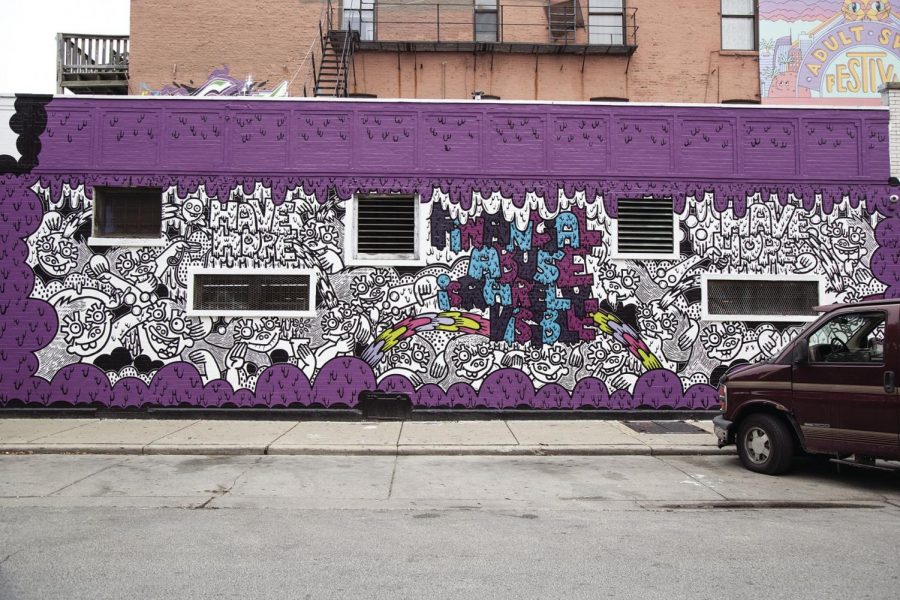Alderman pushes to protect Chicago’s public art
September 24, 2018
Alderman Brian Hopkins (2nd Ward) launched a campaign Sep. 12 to promote an ordinance designed to protect public art.
If passed, the ordinance could protect Chicago’s commissioned murals while eliminating illegal graffiti around the city.
His previous attempt at an ordinance stalled in June because the City Council’s Zoning Committee was concerned that removing graffiti should be a higher priority than preserving the city’s public art.
Hopkins’ latest proposed citywide mural registry will be maintained by the Department of Cultural Affairs and Special Events, and city workers would be required to check before removing public art. Chicago would distribute an official emblem to be placed on or near the work of art so workers would know it is protected.
“I remember as a kid going through tunnels in Hyde Park that were painted with murals and I remember getting on the train and going downtown or to other neighborhoods and seeing some trains—the L and other railroads—that were tagged with graffiti,” said Eric Bruns, a visual artist from the Riverdale neighborhood. “There are a lot of great artists from Chicago, imagine if one of those artists were one of those kids like me, and they grew up, and their mural got covered because of it not being in city standards.”
The initial proposed public art ordinance came after city sanitation workers destroyed two pieces of public art by muralist and Chicago resident JC Rivera in August 2018. The mural was paid for by tax payer dollars and located at the Paulina Brown Line stop on the city’s Northwest Side.
“[With] some art, you’re showing the heritage, the importance, the culture [and] the history of that part of the city, like Pilsen,” said Torrence Powell, a South Holland resident and federal corrections officer. “I love Pilsen, because of the Mexican heritage that is told through art.”
Powell said the ordinance is a great opportunity for artists to shed a bright and more positive light on the city.
“There’s always going to be a stigma, because a lot of people aren’t educated on the arts in that way,” Powell said.
In anticipation of a visit from Amazon headquarters in March, the city accidentally removed a mural by French street artist Blek le Rat from the Cards Against Humanity headquarters, 1551 W. Homer St. In response, the card game’s co-founders met with Hopkins that same month.
Kaylin Loer, a junior music business and management major and a Pilsen resident, said it could be beneficial for the city to identify commissioned work. Developing a place-card system would be a great idea to protect the commissioned work of artists, she said.
“Most people like the murals in the city—there are a ton of them. I can’t see why they would not [pass the ordinance],” she said.








